Open reduction - Screw fixation
1. General considerations
Displaced articular fractures require open approach with anatomical reduction to restore the articular surface and align the physis.
The screw trajectory is typically medial-to-lateral, within the epiphysis and parallel to the physis.
If the fragment is sufficiently large, two screws can be used.
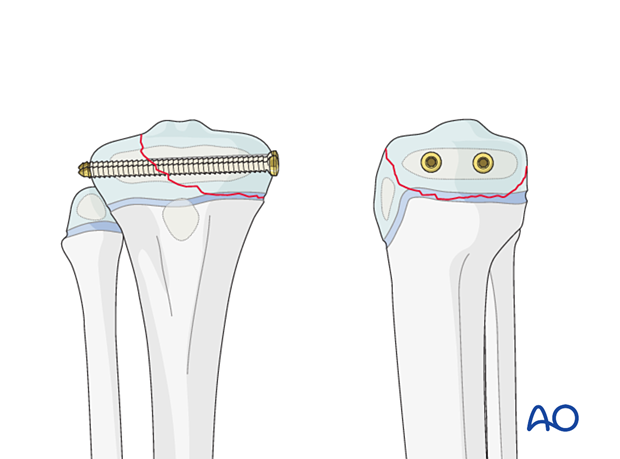
In epi-metaphyseal fractures (Salter-Harris IV), the screw trajectory in the metaphysis and the epiphysis is typically parallel to the physis.
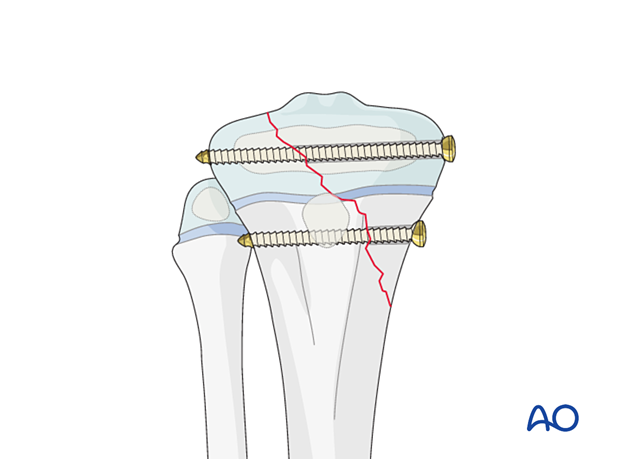
It is mandatory to achieve anatomical reduction of the articular surface to preserve joint function. Open reduction is therefore often necessary.
The main goals of treatment of these fractures are to:
- Restore joint congruity
- Minimize injury to the physis
- Prevent secondary displacement
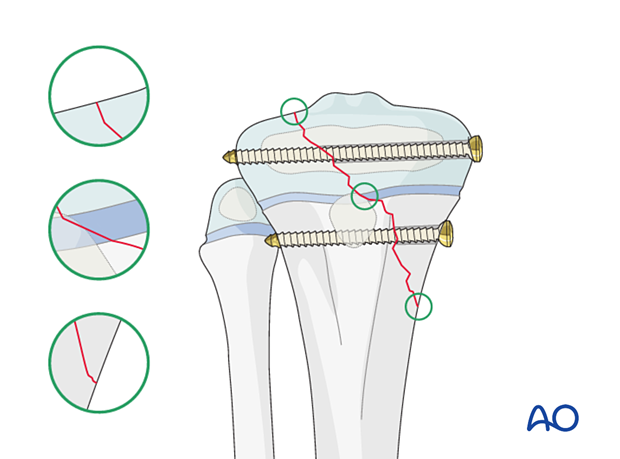
In unstable fractures, screw fixation may not provide enough stability and a plate spanning the physis should be selected. Refer to Open reduction - Plate fixation.
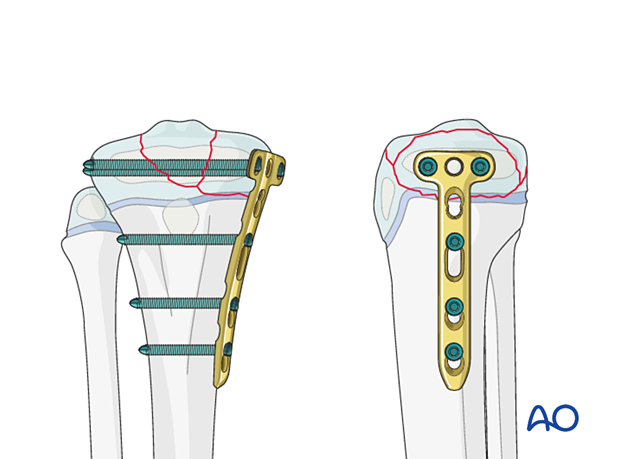
2. Instruments and implants
Appropriately sized cannulated or noncannulated lag screws (2.7, 3.5, or 4.0 mm) can be used.
The following equipment is used:
- Screw set or cannulated screw set
- Reduction forceps
- Dental pick
- Drill
- Image intensifier
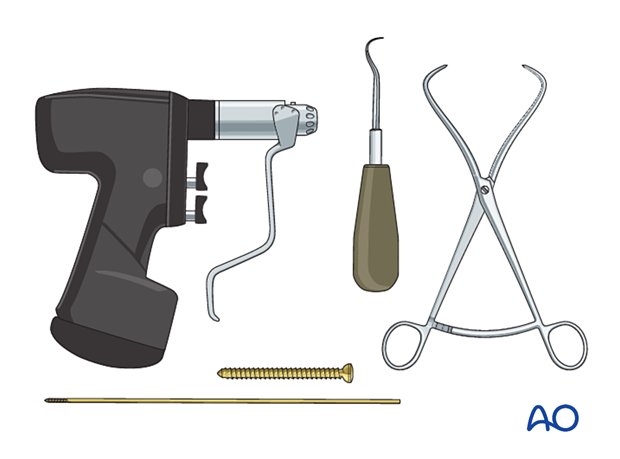
3. Patient preparation
Place the patient in a supine position on a radiolucent table, with a bolster under the ipsilateral flank.
Breaking the table to allow knee flexion may facilitate traction and reduction.
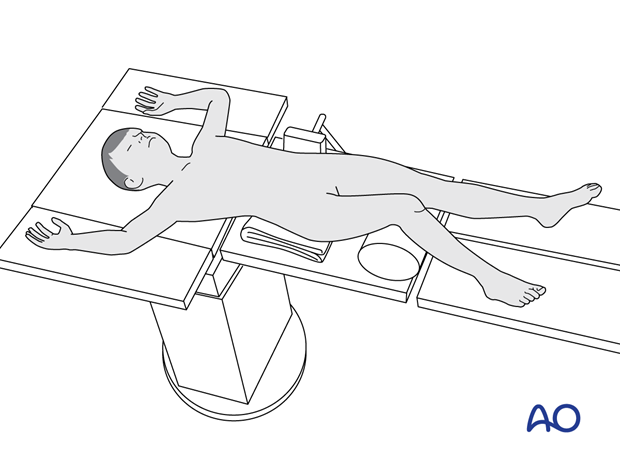
4. Approaches
The approach is dictated by the fracture pattern and location of the block to reduction (eg, periosteum). Screws may be inserted percutaneously.
Assessment of the articular surface and assistance with reduction may be performed either with an arthrotomy or arthroscopy.
5. Reduction
The reduction is performed through an anteromedial incision.
The guide wires and screws, however, may be inserted percutaneously.
Remove blood clots, loose fragments, soft callus, and entrapped periosteum.
Reduce the fracture with gentle manipulation, a dental pick, or a K-wire.
Hold the reduction with reduction forceps.
Confirm anatomical reduction of the articular surface under direct vision.
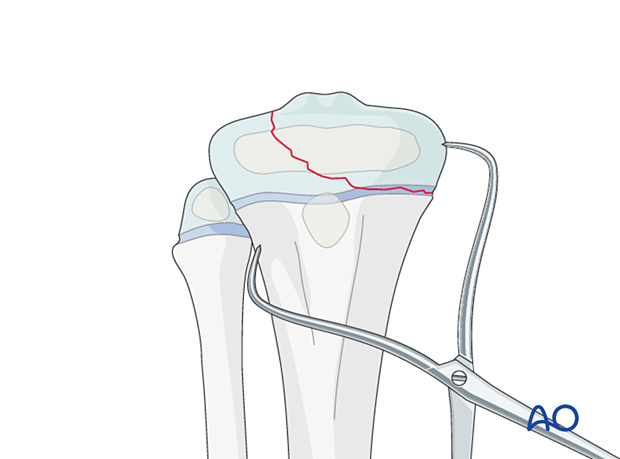
6. Fixation
Incision
Perform a stab incision at the level of the planned screw insertion.
Spread the underlying soft tissues with blunt dissection and place a soft-tissue protector down to the bone.
Insert the guide wire.
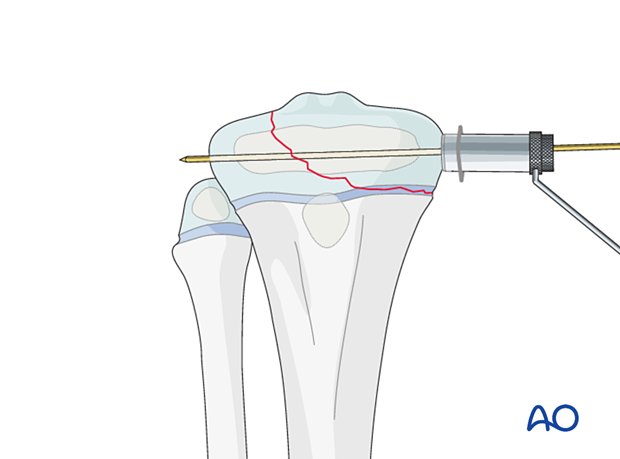
Screw insertion in a Salter-Harris III fracture
Insert a cannulated interfragmentary screw parallel to the physis in a standard manner. If the fracture morphology allows, compression with a lag screw may be applied.
Confirm reduction, fracture stability, and screw placement with an image intensifier prior to removal of the guide wire.
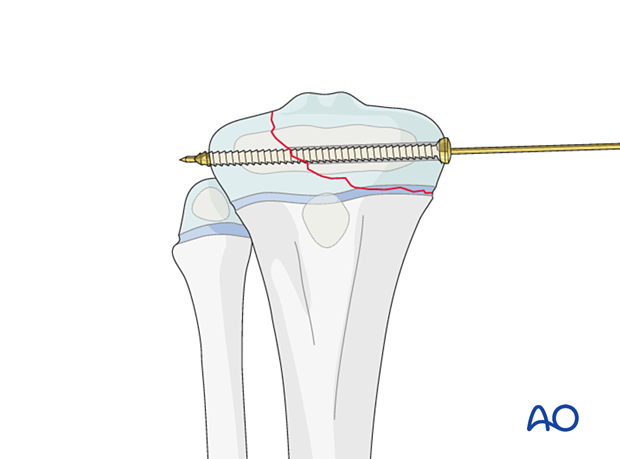
If the fragment is sufficiently large, two screws can be used.
The second screw may be a position screw, inserted without overdrilling the near fragment
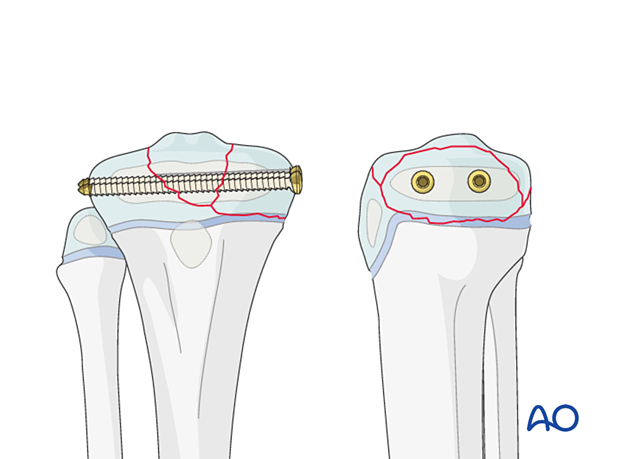
If necessary, a K-wire may provide additional stability.
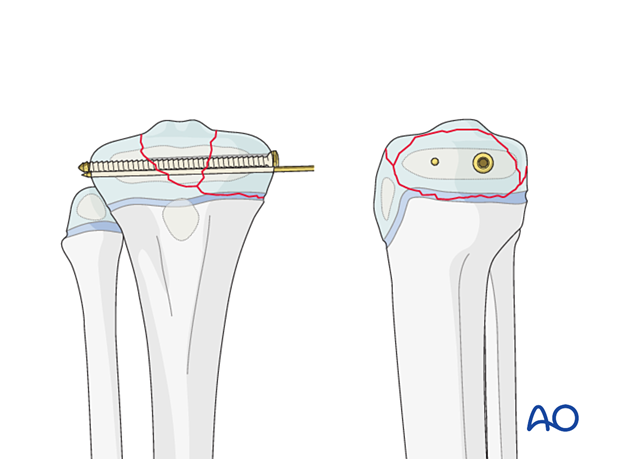
Screw insertion in a Salter-Harris IV fracture
Insert an initial interfragmentary screw into the epiphysis parallel to the physis.
Insert a second lag screw into the metaphyseal (Thurston Holland) fragment, also parallel to the physis.
Confirm reduction, fracture stability, and screw placement with an image intensifier prior to removal of the K-wire.

If the fragment is large enough, a further screw may be inserted into the metaphysis and/or epiphysis.
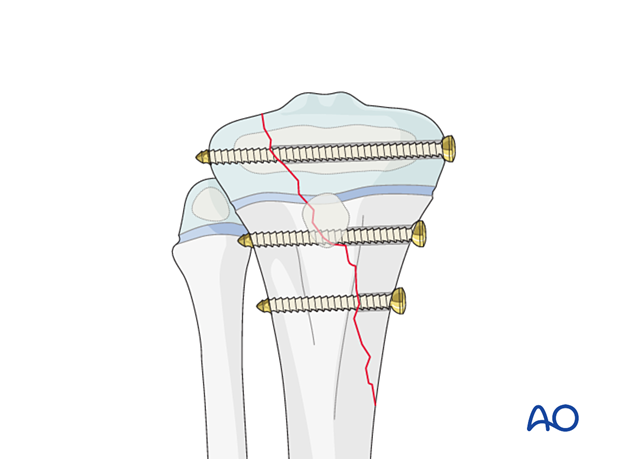
7. Final assessment
Confirm fracture reduction and implant position with an image intensifier.
8. Application of a cast
In a patient compliant with weight-bearing restrictions, no additional casting is necessary.
A long leg cast with the knee flexed 30°–45° may be necessary for 3–6 weeks.
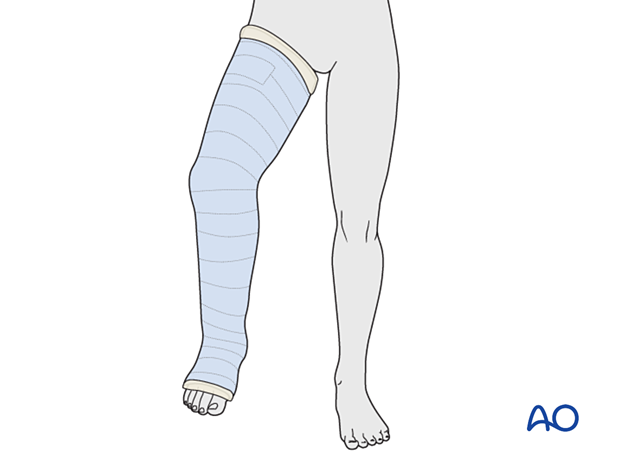
9. Aftercare
Immediate postoperative care
The patient is kept touch-weight bearing.
Older children may be able to use crutches or a walker.
Younger children may require a period of mobilization in a wheelchair.
If no cast has been applied, range of motion exercises can be started immediately.
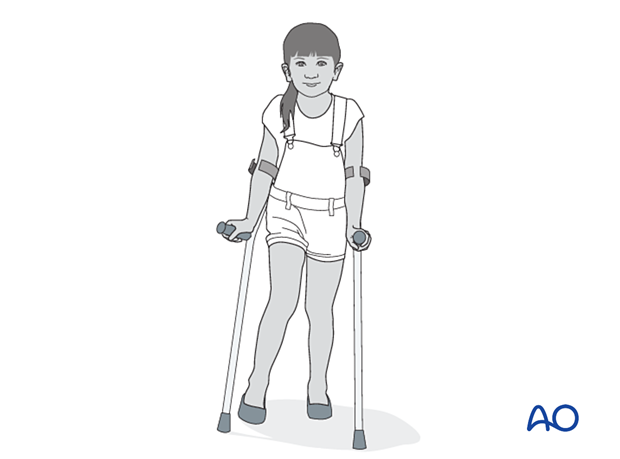
Neurovascular examination
The patient should be examined frequently in the initial period following the injury, to exclude neurovascular compromise or evolving compartment syndrome.
High-energy fractures are associated with vascular injuries and require careful clinical assessment.
Follow-up
The first clinical and radiological follow-up is usually undertaken at 4–6 weeks.
Mobilization
Weight bearing can be started when clinical and radiological signs suggest a stable fracture, typically 3–4 weeks after injury.
Implant removal
A K-wire is typically removed 3–6 weeks after injury.
Follow-up for growth disturbance
All patients with fractures of the proximal tibia should have clinical and radiological examination 8–12 weeks postoperatively to confirm healing and alignment.
Clinical examination should be repeated at intervals for at least one year to detect early signs of growth disturbance.
If there is a clinically relevant leg length discrepancy or malalignment, radiological assessment is required.













